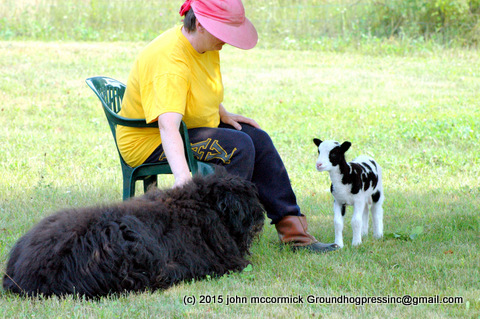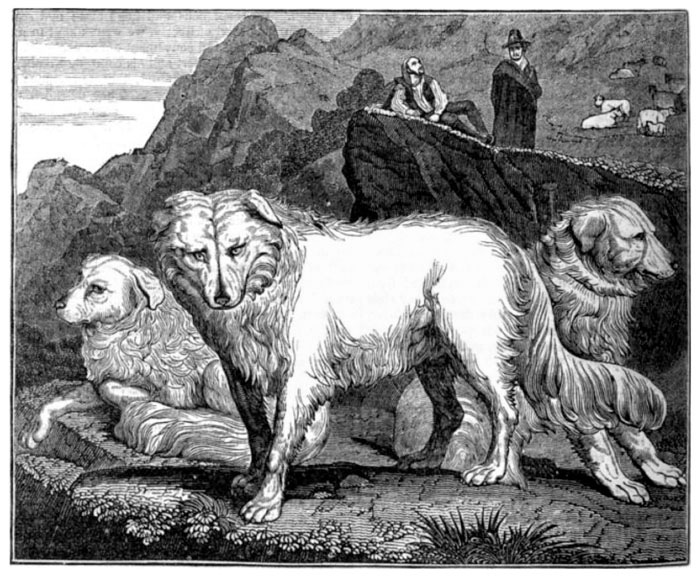“Everywhere I Turn There’s A Wet Nose the love for and science of dogs” is, as the advertising blurb states clearly, a book for people who view dog hair as a condiment.
Chapter after chapter alternates between stories of his own dogs who shared his life and the latest science about dogs.
One dog knows more than 1,000 words, others can smell cancer, much, much more.
He also looks at how dogs were domesticated from wolves and critically how civilization was made possible not by daming horses as some contend, but by keeping dogs which would alert at the approach of an enemy or carnivor even in the middle of the night, for the first time making it possible for humans to keep domesticated animals.
Just think about how difficult it would be for a small village to exist threatened on all sides every night when humans are at a distinct disadvantage but when a few half-tame dogs sleeping at the edge of the human habitations and scavenging food from their discards would raise hell when a predator or strang human approached.
Other chapters look at the science behind things like puppy love – a chemical reaction which helps human mothers bond with their babies also helps humans bond with puppies and vice versa as oxycodone is produced not just in humans but also in the puppies as they gaze into each other’s eyes.
Widely published author John McCormick owned a top Bouvier des Flandres kennel, has raised more than 20 puppies, and rescued 3 adult dogs (and multiple miniature donkeys and horses).
He is also a trained scientist who approached living with his many, many dogs from a loving, but logic-based lifestyle from the Newfoundland rescue which grew up on his boat and went to night school classes at harvard, to his final two dogs who are designer pups, St. Weilers, half St. Bernard and half Rottweiler, many of his dogs were working dogs but all were also house pets, including the breeders in Highland Kennel – the pups were all born in his master bedroom, not in cages.
“Everywhere I Turn There’s A Wet Nose
the love for and science of dogs.”
https://www.amazon.com/dp/B078LYCL82
Kindle version $2.99 or free for Amazon Prime members.
MILD WARNING – if you are offended by the use of the word bitch when correctly addressing a female canine then be prepared to hate this book, as did a reviewer who demanded I censor the draft version because I used the correct scientific and dog breeding and AKC terminology.
Amazon Author Page
https://www.amazon.com/John-A.-McCormick/e/B00287RNFS
From the book:
In small part this book is about my life with dogs, which other dog lovers may find interesting, but, more importantly, it is also about the science of dogs and includes the very latest scientific discoveries about how and why we fall in love with them, how to train them, how to pick a pet that fits your lifestyle, how smart dogs really are (much smarter than most people believe), and even how dogs are almost certainly responsible in very large part for the birth of civilization.
Dogs can smell cancer.
Another puppy is born every second somewhere in the world.
Your dog is likely to yawn if you yawn.
Yawning is a sign of bonding.
Dogs come in a more extreme range of shapes and sizes than ANY other mammal. If you have a companion dog you will live longer, be less likely to have a heart attack, and more likely to survive if you do.
The part of the brain that deals with smell is 40 times larger in canines than in humans. Not 40x larger in proportion, but literally 40 times larger.
Wolves don’t bark; they sometimes cough but mostly they howl. That raises the question of whether dogs bark for our benefit. There are at least 6 bark emotions that most dog owners can identify.
At approximately 9 weeks of age, a puppy goes through what is referred to as the “scare” stage, which can determine their temperament for the rest of their lives (don’t scare a puppy in that age range).
At about 9 weeks, puppies begin to prefer people to other dogs.
Is your dog right-pawed? As with humans, dogs come in left dominant, right dominant, and ambidextrous. You can see this yourself in the way a dog paws at something such as your leg or a toy, how it steps off in a run or walk from standing still, and other ways right-pawed and left-pawed are obvious.
What isn’t so obvious is that the side of the brain that controls the opposite side of the body matters in temperament. These days the first test for a potential service dog is whether it is right-pawed or left-pawed. Right-pawed (left brain) dogs make better service dogs because they are easier to train, less independent, and less aggressive.
Puppies are essentially born premature, blind and deaf for the first and second weeks respectively. They are unable to control their body temperature. Compare this with a newborn lamb that is up and staggering around within 10 minutes of birth.
This book is for you IF:
You’ve always wondered why puppies are so cute (hint; it’s a chemical reaction).
You wondered how wolves became man’s best friend.
You want to know if dogs really listen to us and understand what we are saying.
You always wondered what tail wagging means and what it means to dogs with docked tails.
You wonder what single obvious behavioral trait is shared ONLY by humans and dogs.
You are planning to adopt a rescue dog.
You are a lifelong dog lover.
You are dating a lifelong dog lover.
You’re curious about a dog that knows 1,000 commands/words.
OR you just like to read about pets.







Recent Comments